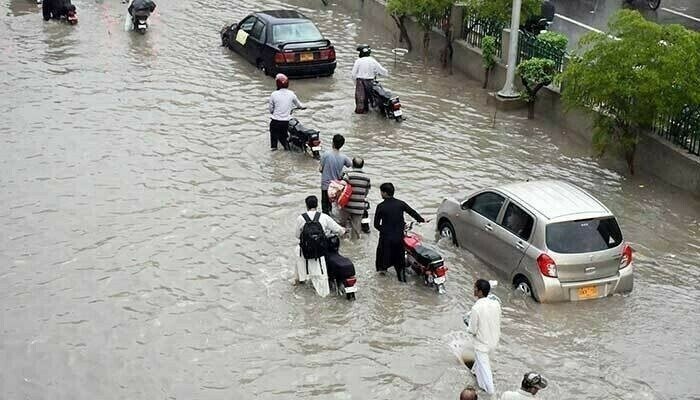Flash Flood at Islamabad’s Top Tourist Destination – Visitors Evacuated Safely

Sudden Downpour Triggers Devastation in Capital
A sudden and intense rainstorm led to a flash flood at Islamabad over the weekend, causing severe damage at one of the city’s most frequented tourist spots Saidpur Village. The flash flood not only disrupted local businesses but also left hundreds of visitors stranded before emergency crews arrived. This unexpected natural disaster has prompted swift action from the Islamabad Capital Territory (ICT) administration.
Saidpur Village Severely Affected by Flash Flood
Saidpur Village, a cultural hub nestled in the Margalla Hills, bore the brunt of the flash flood. Water surged through its narrow lanes, flooding restaurants, art galleries, and heritage spots. Videos circulating on social media show tourists climbing to higher ground while water rushes past them. The damage to infrastructure is estimated in the millions, according to initial assessments by local authorities.
Tourists and Residents Rescued Swiftly
Emergency response teams, including rescue services and civil defense units, responded within minutes of the flash flood at Islamabad. With the help of local volunteers, authorities managed to safely evacuate over 300 people, including foreign tourists. No fatalities were reported, though several individuals were treated for minor injuries and shock.
Authorities Launch Safety Measures and Inspections
In the aftermath of the flooding, the ICT administration has ordered immediate inspection of all drains and flood prone areas around Islamabad. The National Disaster Management Authority (NDMA) issued a red alert and urged residents to stay away from rivers, streams, and hilly terrain until weather conditions improve. Local authorities are also advising tourists to delay any non essential visits to the capital.
Climate Change Behind Increasing Flood Incidents
Experts say that the flash flood at Islamabad is part of a broader pattern linked to climate change. Unpredictable weather and urban sprawl have made the city more vulnerable to sudden rainfall. Dr. Saima Rahman, a climate scientist at Quaid-e-Azam University, noted that Islamabad’s current drainage system is outdated and cannot withstand the volume of water seen in modern-day cloudbursts.
Restoration Work Underway, Businesses Demand Support
Restoration efforts began immediately after the water receded. Clean-up operations are in full swing, with heavy machinery removing mud and debris from the affected areas. However, business owners in Saidpur Village are calling for government compensation to recover losses. “This is peak tourist season. We’ve lost a lot in one day,” said Ahmed Raza, owner of a local café.
Infrastructure Development and Public Awareness Campaigns
In response to the flash flood at Islamabad, government officials have emphasized the importance of long-term planning. Plans are underway to upgrade the city’s drainage systems and improve flood management protocols. Additionally, public awareness campaigns will be launched to educate residents on safety measures during natural disasters. The Capital Development Authority (CDA) has proposed new zoning laws to prevent construction in vulnerable floodplain areas.
Conclusion: A Wake-Up Call for Islamabad
The flash flood at Islamabad has reignited concerns about the capital’s infrastructure and emergency preparedness. While timely rescue efforts prevented a greater tragedy, the incident underscores the urgent need for long-term planning and sustainable urban development. Residents and tourists alike are being urged to follow weather advisories and stay alert during the ongoing monsoon season.
The Islamabad administration has promised regular updates and assured the public that preventive measures are being prioritized to avoid future catastrophes of this scale.



